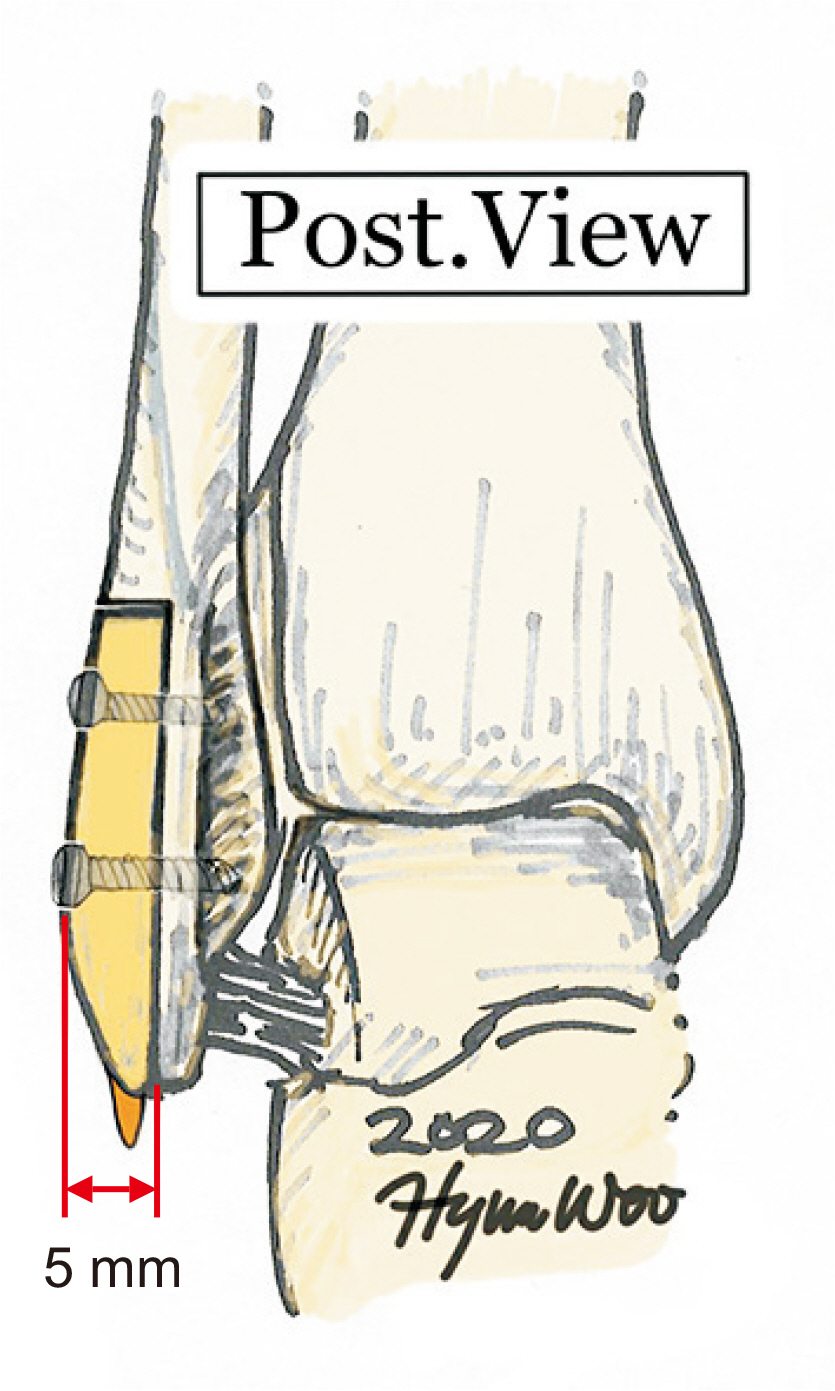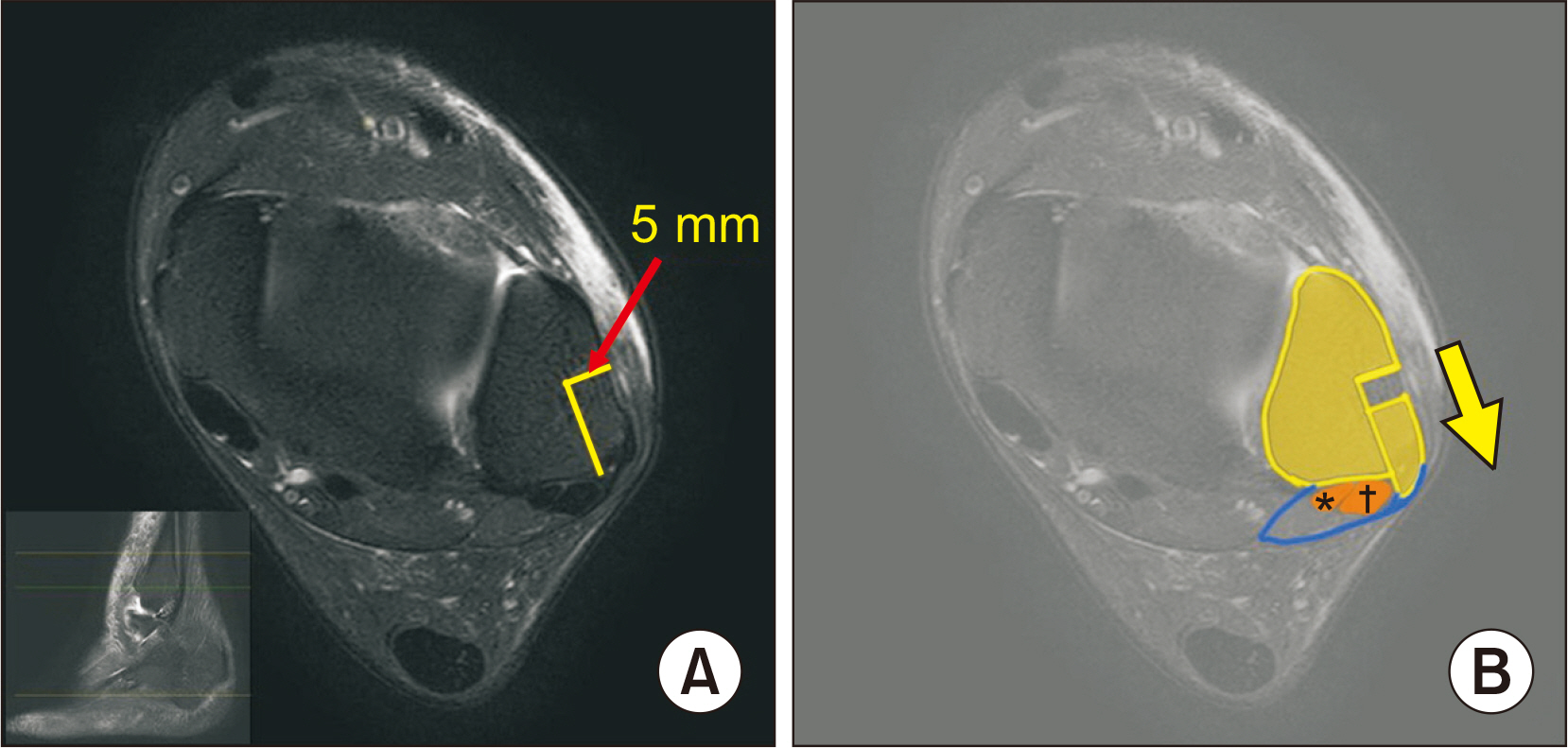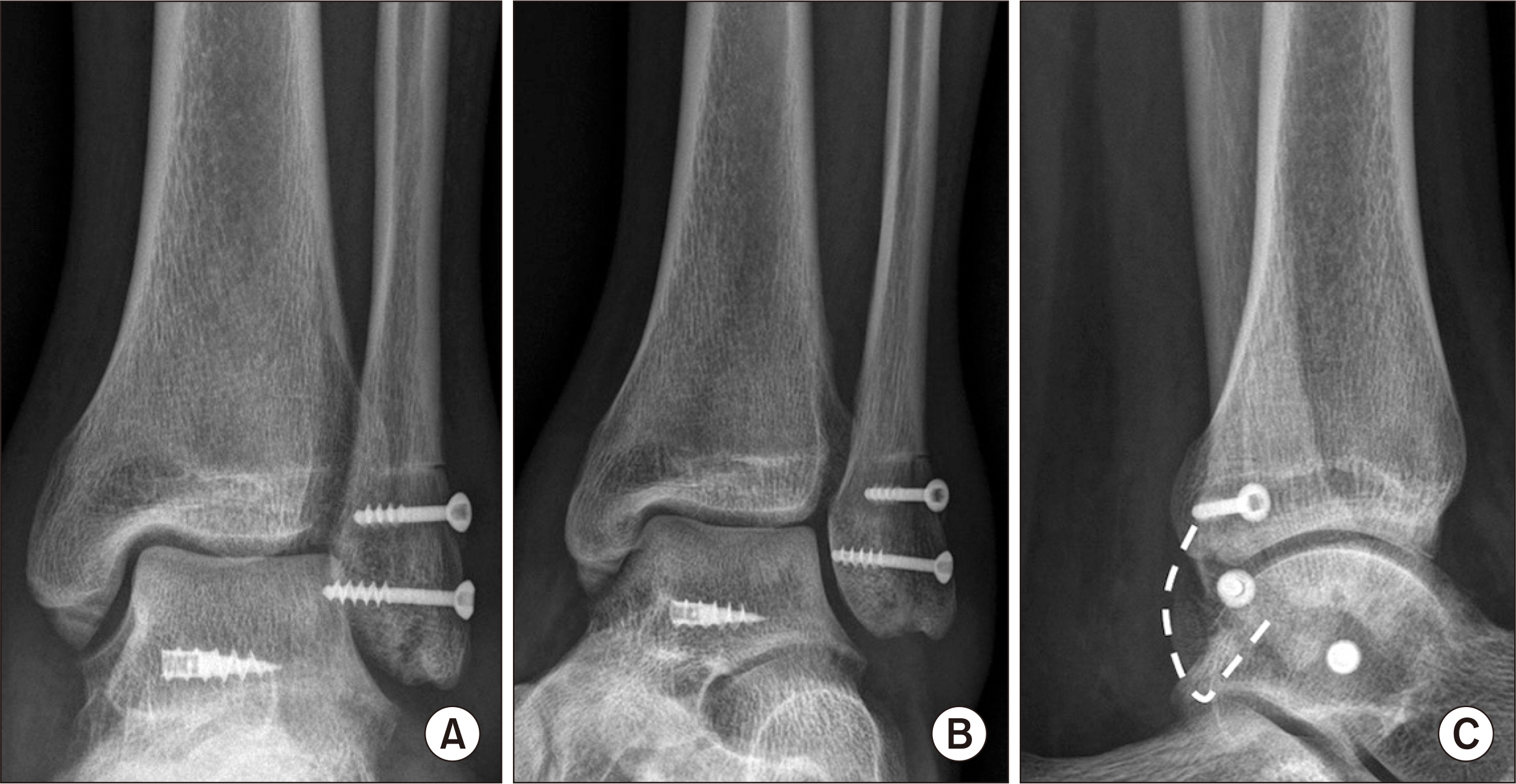J Korean Foot Ankle Soc.
2020 Dec;24(4):168-172. 10.14193/jkfas.2020.24.4.168.
Distal Fibular Rotational Plasty for Chronic Peroneal Tendon Recurrent Dislocation: A Technical Report
- Affiliations
-
- 1Department of Orthopedic Surgery, Dankook University College of Medicine, Cheonan, Korea
- KMID: 2509540
- DOI: http://doi.org/10.14193/jkfas.2020.24.4.168
Abstract
- Chronic recurrent peroneal dislocation often responds poorly to conservative treatment. Surgical treatment has been reported to be more effective than conservative treatment, and various surgical treatment methods are available: superior peroneal retinaculum repair or reattachment, peroneal groove deepening procedures, rerouting procedures, or bone block procedures. Although various treatment options have been reported, there is no consensus regarding which treatment is better. This paper proposes a distal fibular rotational plasty that can prevent recurrent peroneal dislocations and recover its function well by securing a stable peroneal tendon excursion space.
Keyword
Figure
Reference
-
1. van Dijk PAD, Vopat BG, Guss D, Younger A, DiGiovanni CW. 2017; Retromalleolar groove deepening in recurrent peroneal tendon dislocation: technique tip. Orthop J Sports Med. 5:2325967117706670. doi: 10.1177/2325967117706673. DOI: 10.1177/2325967117706673. PMID: 28540318. PMCID: PMC5431455.
Article2. Suh JW, Lee JW, Park JY, Choi WJ, Han SH. 2018; Posterior fibular groove deepening procedure with low-profile screw fixation of fibrocartilaginous flap for chronic peroneal tendon dislocation. J Foot Ankle Surg. 57:478–83. doi: 10.1053/j.jfas.2017.10.033. DOI: 10.1053/j.jfas.2017.10.033. PMID: 29269024.
Article3. Cho J, Kim JY, Song DG, Lee WC. 2014; Comparison of outcome after retinaculum repair with and without fibular groove deepening for recurrent dislocation of the peroneal tendons. Foot Ankle Int. 35:683–9. doi: 10.1177/1071100714531233. DOI: 10.1177/1071100714531233. PMID: 24709746.
Article4. Heckman DS, Reddy S, Pedowitz D, Wapner KL, Parekh SG. 2008; Operative treatment for peroneal tendon disorders. J Bone Joint Surg Am. 90:404–18. doi: 10.2106/JBJS.G.00965. DOI: 10.2106/JBJS.G.00965. PMID: 18245603.
Article5. van Dijk PA, Gianakos AL, Kerkhoffs GM, Kennedy JG. 2016; Return to sports and clinical outcomes in patients treated for peroneal tendon dislocation: a systematic review. Knee Surg Sports Traumatol Arthrosc. 24:1155–64. doi: 10.1007/s00167-015-3833-z. DOI: 10.1007/s00167-015-3833-z. PMID: 26519186. PMCID: PMC4823328.
Article6. Tomihara T, Shimada N, Yoshida G, Kaneda K, Matsuura T, Satake S. 2010; Comparison of modified Das De procedure with Du Vries procedure for traumatic peroneal tendon dislocation. Arch Orthop Trauma Surg. 130:1059–63. doi: 10.1007/s00402-010-1136-x. DOI: 10.1007/s00402-010-1136-x. PMID: 20556617.
Article7. Wang CC, Wang SJ, Lien SB, Lin LC. 2009; A new peroneal tendon rerouting method to treat recurrent dislocation of peroneal tendons. Am J Sports Med. 37:552–7. doi: 10.1177/0363546508325924. DOI: 10.1177/0363546508325924. PMID: 19059898.
Article8. Ogawa BK, Thordarson DB. 2007; Current concepts review: peroneal tendon subluxation and dislocation. Foot Ankle Int. 28:1034–40. doi: 10.3113/FAI.2007.1034. DOI: 10.3113/FAI.2007.1034. PMID: 17880883.9. Zhenbo Z, Jin W, Haifeng G, Huanting L, Feng C, Ming L. 2014; Sliding fibular graft repair for the treatment of recurrent peroneal subluxation. Foot Ankle Int. 35:496–503. doi: 10.1177/1071100714523271. DOI: 10.1177/1071100714523271. PMID: 24637656.
Article10. Deng E, Shi W, Jiao C, Xie X, Jiang D, Chen L, et al. 2019; Reattachment of the superior peroneal retinaculum versus the bone block procedure for the treatment of recurrent peroneal tendon dislocation: two safe and effective techniques. Knee Surg Sports Traumatol Arthrosc. 27:2877–83. doi: 10.1007/s00167-019-05479-2. DOI: 10.1007/s00167-019-05479-2. PMID: 30903219.
Article
- Full Text Links
- Actions
-
Cited
- CITED
-
- Close
- Share
- Similar articles
-
- Operative Treatment for Bilateral Chronic Recurrent Dislocation of the Peroneal Tendon: A Case Report
- Operative Treatment of Chronic Recurrent Dislocation of Peroneal Tendon: A Case Report
- Bilateral Recurrent Dislocation of the Peroneal Tendon: A Case Report
- Treatment of Peroneal Tendon Subluxation by Fibular Groove Deepening
- Operative Treatment of Acute Peroneal Tendon Subluxation in Athletes: A Case Report - 2 Cases







